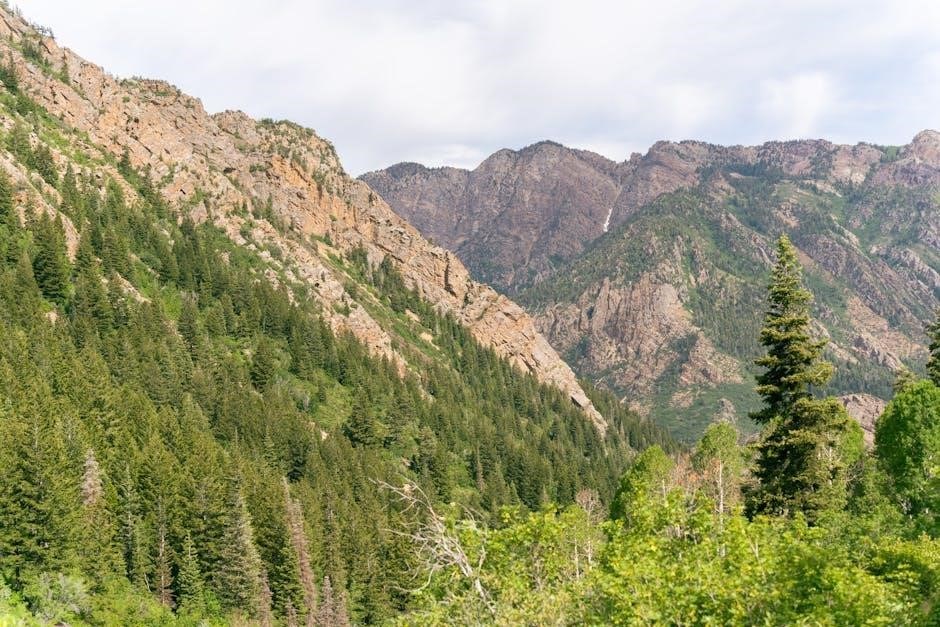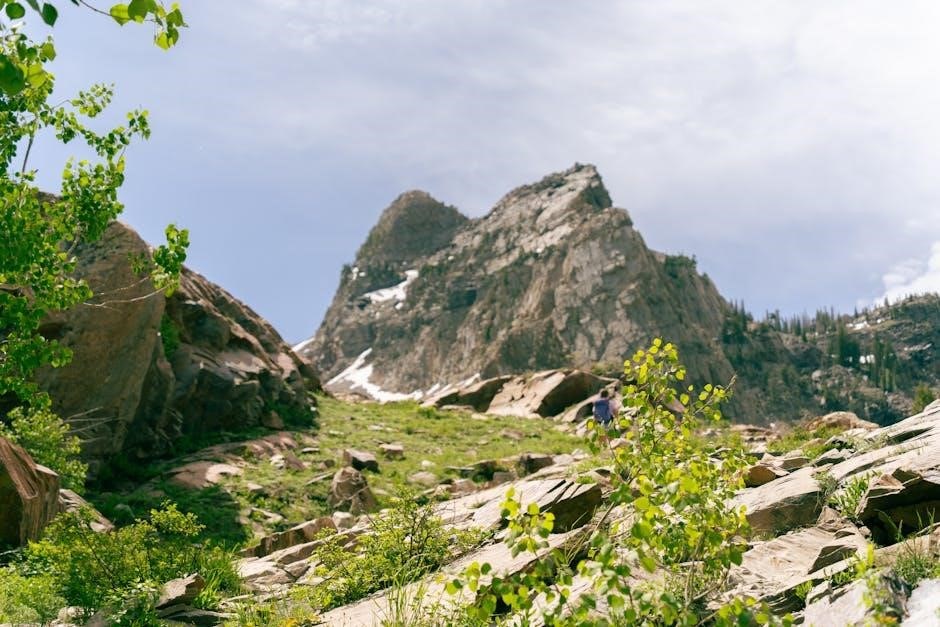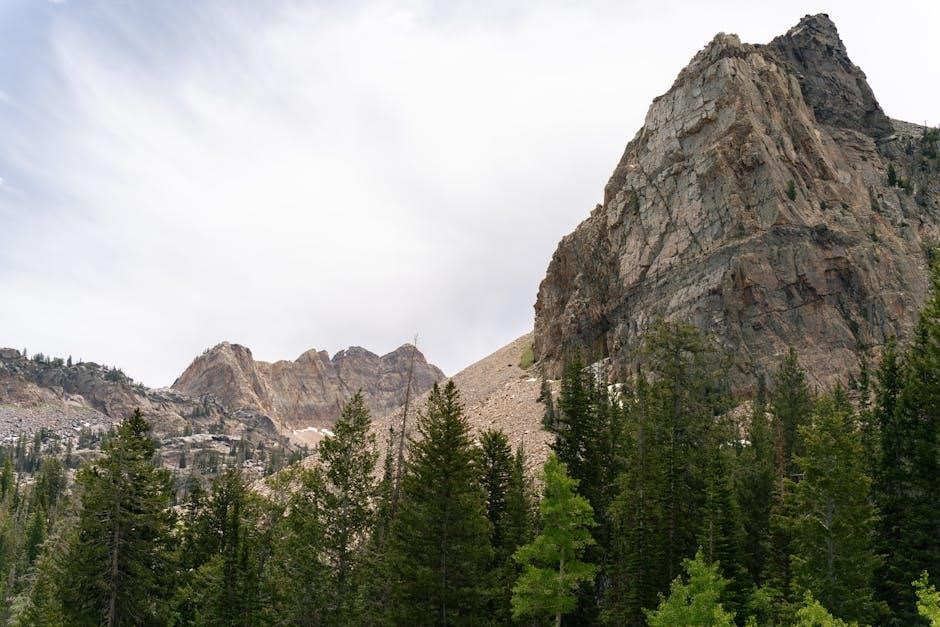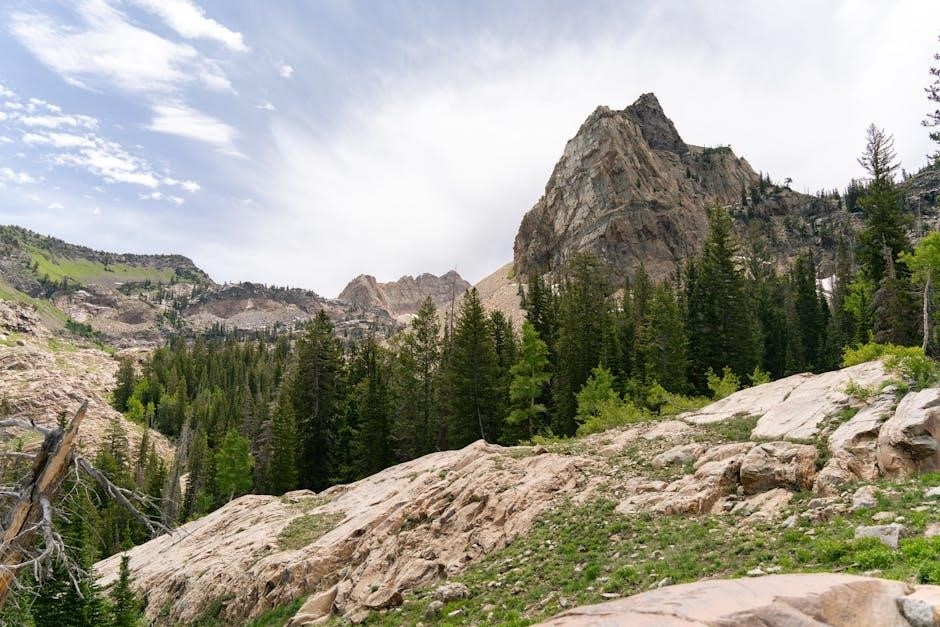Alpine WSG is a water-soluble granule insecticide designed for effective pest control. It targets ants, cockroaches, fleas, and more, offering a non-repellent solution for indoor and outdoor use. Perfect for professionals and homeowners, Alpine WSG ensures safe and efficient application when mixed and applied correctly.
What is Alpine WSG?
Alpine WSG (Water-Soluble Granule) is a professional-grade insecticide designed for effective pest control. It is a non-repellent, non-pyrethroid solution that targets a wide range of pests, including ants, cockroaches, fleas, and stink bugs. Formulated as water-soluble granules, Alpine WSG is easy to mix and apply, offering flexibility for both indoor and outdoor use. Available in single-use packets or bulk, it provides convenience and precision in application. With EPA-granted Reduced Risk status, Alpine WSG is a safer option for pest management while maintaining high efficacy. Its unique properties make it ideal for resistance management and controlling pests in various settings, including residential and commercial areas.
Importance of Proper Instructions for Alpine WSG
Following proper instructions for Alpine WSG is crucial for ensuring safety, effectiveness, and environmental stewardship. Correct mixing and application procedures guarantee optimal pest control while minimizing risks to humans, pets, and beneficial organisms. Improper use can lead to reduced efficacy, potential phytotoxicity, or unintended harm to non-target species. Adhering to the guidelines ensures the product performs as intended, delivering reliable results for pest management. Additionally, proper usage aligns with regulatory requirements and supports resistance management strategies, ensuring long-term effectiveness. Always refer to the label for detailed instructions to maximize safety and efficiency when using Alpine WSG.

Mixing Alpine WSG
Mixing Alpine WSG involves filling your sprayer halfway with water, adding the packet, agitating thoroughly, then topping up to the desired volume for optimal solution preparation.

Step-by-Step Mixing Instructions
To prepare Alpine WSG, start by filling your sprayer tank halfway with clean water. Open the Alpine WSG packet and pour its contents into the water. Agitate the mixture thoroughly to ensure the granules dissolve completely. Once fully dissolved, add the remaining water to reach the desired volume, typically 1 gallon. Continue agitation for a few moments to ensure an even solution. Before application, inspect the equipment to confirm proper function. Always follow the recommended dilution ratios to maintain efficacy and safety. Proper mixing is crucial for optimal pest control results and to prevent any potential issues during application. Ensure all steps are followed meticulously for best outcomes;
Proper Water Dilution Ratios
Alpine WSG is typically mixed at a rate of 10 grams per gallon of water, ensuring optimal pest control while maintaining safety. For most applications, fill your sprayer tank halfway with clean water, add the Alpine WSG packet, and agitate until fully dissolved. Top up the tank to 1 gallon, ensuring the solution is well-mixed. The standard dilution ratio of 0.1% active ingredient is achieved with this method. Always adhere to the recommended water-to-product ratio to avoid under or over-concentration, which can affect efficacy or safety. Proper dilution ensures consistent performance and minimizes environmental impact, making it essential to follow the guidelines precisely for effective pest management.

Ensuring Complete Dissolution
Complete dissolution of Alpine WSG is crucial for effective pest control. Start by filling the sprayer halfway with water, then add the packet. Agitate thoroughly for 1-2 minutes to ensure all granules dissolve. Avoid adding the product to dry tanks or undiluted water, as this can delay dissolution; Use warm water if possible, as it aids in dissolving the granules faster. After mixing, top up the tank to 1 gallon, ensuring the solution is uniform. Regularly agitate the mixture during application to prevent settling. Incomplete dissolution can reduce product efficacy, making it essential to follow these steps carefully for optimal results and safe application.

Application Guidelines
Alpine WSG can be applied via Crack & Crevice, Spot, or Surface methods. It is approved for both indoor and outdoor use, targeting a wide range of pests effectively.
Target Pests for Alpine WSG
Alpine WSG is highly effective against a variety of pests, including ants, cockroaches, fleas, stink bugs, and house flies. Its non-repellent formula allows it to target pests without alerting them, ensuring comprehensive control. It is particularly recommended for German cockroaches, bed bugs, and Brown Marmorated stink bugs. The product’s versatility makes it suitable for both residential and commercial settings, addressing infestations efficiently. By targeting the source of pest activity, Alpine WSG helps prevent re-infestation, providing long-lasting results. Its broad-spectrum efficacy makes it a reliable choice for managing diverse pest challenges.
Approved Use Sites
Alpine WSG is approved for use in a wide range of indoor and outdoor settings, including residential homes, apartments, commercial establishments, and public areas. Indoors, it can be applied in kitchens, bathrooms, basements, and crawl spaces to target pests like cockroaches and ants. Outdoors, it is effective for treating lawns, gardens, patios, and perimeter areas to control fleas, stink bugs, and other pests. The product is also labeled for use in off-structure sites, offering flexibility for pest management professionals; Always follow local regulations and label instructions for specific use sites to ensure safe and effective application.
Application Methods (Crack & Crevice, Spot, Surface)
Alpine WSG can be applied through various methods to target pests effectively. Crack & Crevice treatments involve spraying directly into hiding places like cracks, crevices, and voids where pests nest or travel. Spot treatments are used for localized infestations, focusing on specific areas with high pest activity. Surface applications provide broader coverage, treating large areas to prevent pest movement. Each method ensures precise delivery of the insecticide, maximizing its effectiveness against target pests. Always use appropriate spray equipment and follow label instructions for the chosen application method to achieve optimal results and minimize waste.
Safety Precautions
Wear protective clothing, gloves, and eyewear when handling Alpine WSG. Avoid inhalation of dust during mixing. Keep away from food, water sources, and pollinators. Ensure proper disposal of unused product and packaging to prevent environmental contamination.
Handling and Safety Tips
When handling Alpine WSG, wear protective clothing, including gloves, goggles, and a dust mask. Avoid skin contact and inhalation of dust during mixing. Ensure good ventilation in the area. Wash hands thoroughly after handling the product. If skin contact occurs, wash immediately with soap and water. In case of eye contact, flush with water for at least 15 minutes. Contaminated clothing should be washed separately; Store Alpine WSG in a cool, dry place away from food, water sources, and pollinators. Keep out of reach of children and pets. In case of accidental exposure, seek medical attention if symptoms persist. Always follow the label instructions for safe handling.
Protecting Bees and Pollinators
To protect bees and other pollinators, avoid applying Alpine WSG during blooming periods when flowers are present. Do not spray directly on blooming plants or flowers. Follow all label restrictions regarding bee protection, as indicated by the bee hazard icon. Applications should be made during early morning or late evening when pollinators are less active. Avoid drift onto nearby flowering plants or bee habitats. These precautions are essential to minimize the impact on pollinators while ensuring effective pest control. Always adhere to local regulations and label instructions to safeguard pollinator health.
Disposal Instructions
Proper disposal of Alpine WSG and its containers is crucial to prevent environmental contamination. Empty containers should be rinsed thoroughly and disposed of in accordance with local and state regulations. Do not reuse containers for any other purpose. For unused product, follow the label instructions for disposal. If partly filled, contact your local solid waste agency for guidance. Ensure all waste is handled in an environmentally responsible manner to minimize ecological impact. Always adhere to federal, state, and local laws regarding pesticide disposal to protect the environment and public health.
Equipment Setup
Thoroughly clean spray equipment before use. Fill the tank halfway with water, add the Alpine WSG packet, agitate to dissolve, then top up to 1 gallon.
Preparing Spray Equipment

Before mixing Alpine WSG, ensure your spray equipment is clean and free from residual chemicals. Start by rinsing the tank, hoses, and nozzles thoroughly with water. This prevents contamination and ensures proper performance of the insecticide; Remove any filters and screens to avoid clogging during application. Once cleaned, your equipment is ready for the mixing process. Proper preparation ensures effective pest control and prevents equipment damage. Always follow the manufacturer’s guidelines for Alpine WSG to achieve the best results.
Calibrating Spray Equipment
Calibrating your spray equipment ensures accurate application rates and even coverage. Start by determining the flow rate of your sprayer. Adjust the nozzle and pressure to achieve the recommended application rate, typically 0.1% concentration for Alpine WSG. Test the flow rate by measuring the volume applied over a set distance or time. Ensure the equipment delivers the correct amount of solution per area to avoid under-application or over-application. Proper calibration is crucial for effective pest control and minimizing environmental impact. Always refer to the product label for specific guidelines tailored to your equipment and target area;

Environmental Considerations
Minimizing environmental impact is crucial when using Alpine WSG. Ensure proper application to avoid runoff into waterways and protect pollinators. Follow EPA guidelines for reduced-risk pest control.
Resistance Management
Alpine WSG plays a key role in resistance management strategies due to its unique mode of action. As a non-repellent and non-pyrethroid insecticide, it is ideal for rotation with other products to prevent pest resistance. Regularly alternating chemicals with different active ingredients helps maintain long-term efficacy. Alpine WSG targets pests like German cockroaches and bed bugs, which are prone to developing resistance. By integrating Alpine WSG into a comprehensive pest management plan, professionals can effectively mitigate resistance issues. Always follow the label instructions and local regulations to ensure proper use. This approach not only extends the product’s effectiveness but also protects the environment and public health. Proper resistance management ensures sustainable pest control solutions.
Minimizing Environmental Impact
Alpine WSG is formulated to minimize environmental impact while ensuring effective pest control. Its water-soluble granule design reduces the risk of runoff and drift, making it a more targeted solution. By following proper mixing and application guidelines, users can avoid overapplication and unnecessary chemical release. The product’s non-repellent nature also reduces the likelihood of pests developing resistance, which can lead to overuse of insecticides. Proper disposal of unused product and rinse water, as per local regulations, further protects aquatic and terrestrial ecosystems. Additionally, Alpine WSG’s EPA-granted Reduced Risk status highlights its lower toxicity profile compared to many traditional insecticides. Always calibrate spray equipment correctly to avoid excess chemical use, ensuring a balanced approach to pest control and environmental stewardship.

Troubleshooting Common Issues
Identify common issues like poor efficacy or phytotoxicity. Check application methods, ensure proper mixing, and verify storage conditions. Adjust practices to resolve problems effectively and safely.
Poor Efficacy of Alpine WSG
Poor efficacy can result from improper mixing, insufficient agitation, or incorrect dilution ratios. Ensure the product is fully dissolved and applied at recommended rates. Check for expired or degraded product, as this can reduce potency. Environmental factors like extreme temperatures or humidity may also impact performance. Reapplication may be necessary under heavy pest pressure. Always follow the label instructions precisely to maximize effectiveness and minimize resistance development. If issues persist, consult the manufacturer or a pest control professional for guidance.
Dealing with Phytotoxicity
Phytotoxicity occurs when Alpine WSG causes unintended harm to plants. To minimize this risk, avoid applying the product during peak sunlight or extreme heat, as this increases leaf uptake. Use the recommended dilution ratio and avoid spraying sensitive plants or edible crops unless specified on the label. If phytotoxicity occurs, rinse affected plants with water promptly. Preventive measures include testing a small area first and waiting 24 hours before full application. Always follow label instructions and consider alternative products for sensitive vegetation. Proper timing and application techniques can help protect plants while maintaining pest control effectiveness;
Storage and Disposal
Store Alpine WSG in a cool, dry place, away from children and pets. Dispose of unused product and empty containers according to local regulations, ensuring proper sealing.
Proper Storage Conditions
Store Alpine WSG in a cool, dry, well-ventilated area away from direct sunlight and moisture. Keep the product in its original packaging, tightly sealed, and out of reach of children and pets. Avoid storing in areas prone to flooding or extreme temperatures. Ensure the storage area is free from pests and contaminants to maintain product integrity. Do not store near food, feed, or other pesticides. Ideal storage temperatures range between 40°F and 90°F (4°C and 32°C). Properly stored Alpine WSG retains its effectiveness for its shelf life, ensuring safe and efficient use when needed.
Disposal of Unused Product
Dispose of unused Alpine WSG according to federal, state, and local regulations. Empty containers should be rinsed thoroughly and recycled or disposed of in a sanitary landfill. If the container is partly filled, contact your local solid waste agency for instructions. Do not reuse containers for other purposes. Dispose of the product in a way that prevents environmental contamination, such as avoiding drainage into waterways or sewers. For large quantities, consult local authorities for proper disposal methods. Always follow EPA guidelines and regional restrictions, such as those specified for New York, to ensure compliance and minimize ecological impact.
Using Alpine WSG effectively requires careful adherence to mixing, application, and safety guidelines. This insecticide is a versatile solution for controlling pests like ants, cockroaches, and fleas, offering non-repellent and non-pyrethroid properties. Always follow the recommended dilution ratios and application methods to ensure optimal results while minimizing environmental impact. Proper storage, disposal, and equipment calibration are crucial for safety and efficacy. By following these instructions, you can achieve successful pest control while protecting people, pets, and the environment. Refer to the product label for additional details and ensure compliance with local regulations for responsible use.
